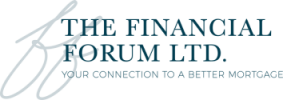How much would you qualify for?
If you’re ready to purchase a new home, one of the first things you want to find out is how much you’re qualified to borrow. Lenders have restrictions on the amount of money that a lender can borrow that is based on the borrower’s income and current debt.
GDSR: Gross Debt Service Ratio and TDSR: Total Debt Service Ratio
To determine the amount that you’re able to borrow, a lender will take into account your gross household income, your down-payment and your mortgage interest rate. Lenders will also consider your existing assets and liabilities. The rules governing these two factors – Gross Debt Service Ratio (GDSR) and Total Debt Service Ratio (TDSR)— are overseen by Canada Mortgage and Housing Corporation (CMHC).
CMHC is Canada’s national housing agency and this country’s premier provider of mortgage loan insurance, mortgage-backed securities, housing policy and programs, and housing research. GDSR states that your monthly housing costs should not exceed 32% of your gross monthly household income. Housing costs include monthly mortgage payments, taxes and heating expenses, and, if applicable, any association fees.
The Total Debt Service Ratio (TDSR) states that your entire monthly debt load should not exceed 40% of your gross monthly income. This debt includes your house payments, car payments and personal loans, as well as credit cards and other unsecured debts. We have built a comprehensive Mortgage Qualification Calculator to help you figure out how much you can borrow before you talk to a lender. Simply fill in the entry fields and click on the payment schedule button to see a complete amortization schedule of your mortgage payments.
Annual income
Your gross annual income. For married couples, this is your total combined gross annual income. Please note that if you enter a purchase price or total monthly payment, the calculator will determine the gross annual income required to qualify for the purchase. This calculated amount may be higher or lower than your actual income.
Purchase price
The price of the home you wish to purchase. This is the actual price you pay, not including any closing costs. If you enter an annual income or a total monthly payment, the purchase price will be calculated based on these amounts.
Total monthly payment
The total monthly payment that you can qualify for. This is the total of principal, interest, taxes and heat paid each month. If you enter a purchase price or annual income, the total monthly payment will be calculated based on these amounts.
Cash on hand
Cash needed for your down payment and closing costs. You can purchase a home with as little as 5% down payment with mortgage loan insurance. An ideal down payment is between 10 – 20% of the purchase price of the home.
Interest rate
The current interest rate on your mortgage.
Amortization in years
The number of years over which you’ll repay this mortgage.
Mortgage Loan Insurance Premium (non-refundable)
Mortgage insurance makes it possible for homebuyers to purchase a home using a lower down payment. The Canadian Bank Act prohibits most federally regulated lending institutions from providing mortgages without mortgage loan insurance for amounts that exceed 80% of the value of the home, or purchases with less than 20% down payment. The Canadian Mortgage and Housing Corporation (CMHC) and Genworth Financial are two companies that offer Mortgage Loan Insurance. For more information please visit their websites – www.chmc.ca and www.genworth.ca.






